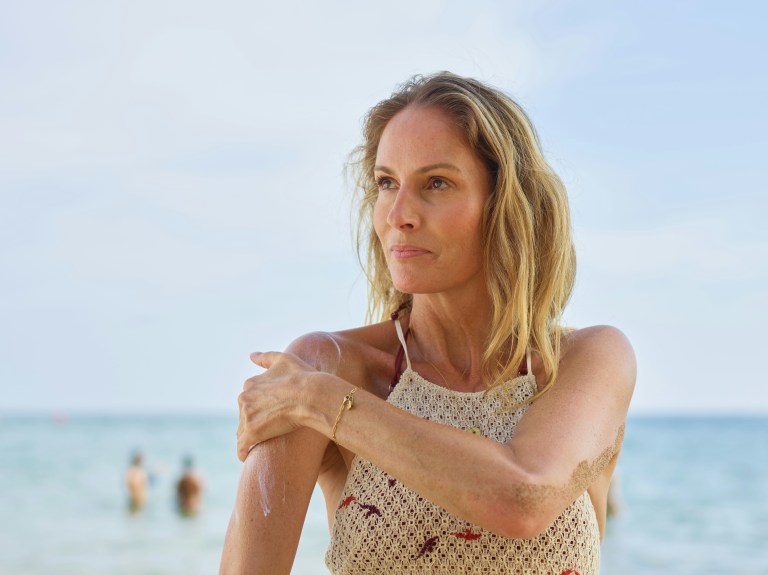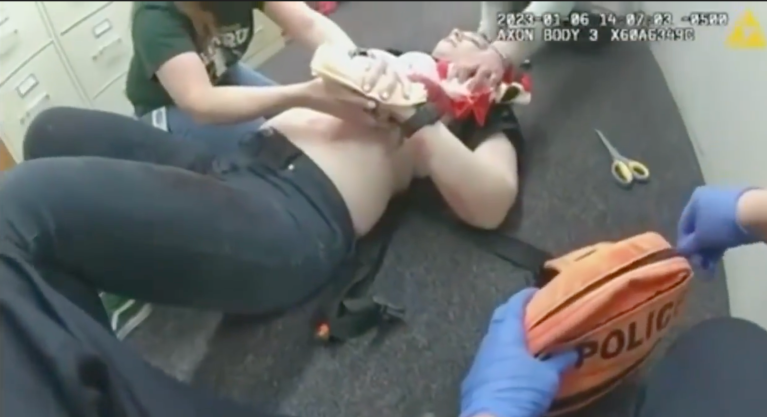
How To Feel More Comfortable Being Vulnerable
Sometimes it’s worth it to take a greater vulnerability risk (the cross-country move, the “I love you”), but making the regular practice of taking small steps helps strengthen that vulnerability muscle.
By ![]() Kate McCombs
Kate McCombs

I’m sitting in a circle with a group of amazing young women at a New England College in their social house living room. It’s part of an informal “sex salon” Q&A that I offer organizers when I do larger workshops a university. I like to meet with student leaders in a more intimate setting so they can get some more face time with me in a more relaxed environment.
We’re eating pizza and I’m answering questions about sex and, inevitably, we get around to feelings. They tell me lots of anecdotes about the hookup culture on campus and how almost no one has relationships. They tell me how they are afraid of being perceived as “needy” if they are seen as wanting a relationship.
Texting is particularly full of emotional landmines and power dynamics. The timing of the reply, the wording, the emojis – they are all ripe for interpretation.
One woman asks, “So how do I tell a guy I liked hooking up with him and want to do it again but don’t want him to think I want a relationship from him?” She seems genuinely curious.
I ask, “Could you ever say, ‘Hey, I really enjoyed having sex with you and I think it would be fun to do it again and to be totally transparent, I’m not looking to marry you?’”
She looks at me slightly puzzled and says, “Yeah, I guess I could.”
I say, “I’m guessing that feels like it would be a pretty vulnerable thing to say to this dude.” I say the magic word: vulnerable.
Cue enthusiastic nods from all the women. I have struck a chord.
I say, “OK. What’s vulnerable here? 1. Saying what you want. And 2. Saying what you don’t want. Is that, right?”
More very enthusiastic nods.
It’s amazing how hard it is to say what we want and what we don’t want – especially for women. It’s one of the reasons I love the Desire Map so much. It’s made it easier for me to do both.
I notice, like many other people who make vulnerability a part of their lives, that the more I practice it, the more powerful I feel. This might seem counterintuitive to some since vulnerability can feel like powerlessness.
But in the choice-filled surrender to vulnerability, we are participating in a radical act that can make us feel like badasses. Most people don’t regularly exercise that kind of courage and devotion to getting what they want.
Brené Brown talks about the relationship between vulnerability and connection extensively in her work. In my experience, vulnerability leads me to connection (my #1 core desired feeling). It’s a bit easier to see how connection could inspire feelings of powerfulness. We feel more powerful in a group, even a group of two.
But how do we get there?
Here are 4 things I do that get me more comfortable with vulnerability.
1. I take baby steps.
You don’t have to tell your darkest secrets in front of 10,000 people in order to be vulnerable. Now or ever. Choice is key and baby steps are a way of exercising that choice. I try to challenge myself without constantly throwing myself in the vulnerability deep end.
Just telling your friend how grateful your are for much she does for you, or sending that slightly-awkward email, could be the baby step for you.
Sometimes it’s worth it to take a greater vulnerability risk (the cross-country move, the “I love you”), but making the regular practice of taking small steps helps strengthen that vulnerability muscle.
2. I’m devoted to self-care.
This has a lot to do with my migraines. I wasn’t nearly as good at self-care before they became chronic. Now, if I don’t practice devotional self-care, I can’t work or participate much in life.
But self-care requires intense boundary setting. I do lots and lots of saying what I do and don’t need. Which requires vulnerability (and kindness). Every day.
3. I’m mindful of where vulnerability shows up in my life.
When I can name it (“Oh hey, that’s vulnerability I’m feeling.”), I can conjure up my emotional and communicative tools and use what’s at my disposal.
I pay attention to vulnerability, so when I comes up, I can take deep breaths and get clarity about what I need. Sometimes I reach out to someone I trust to help me through it, which leads me to number 4.
4. I have a kick-ass support network.
This is my greatest vulnerability asset. Instead of spending lots of energy protecting my heart from pain, I put it into building a great support network.
I know exactly to whom I can turn when I need support – with a great deal of precision. If I’m having a body image-related crisis, I call Lauren. If I need health support, I get in touch with my empathy-superstar neurologist. Crappy day? That’s generally best friend territory.
Let’s face it, shit will happen. No one cannot protect the heart from pain – blocking the heart only protects you from connection.
My support network doesn’t protect me from life’s discomforts, but it does cushion the blowback. It helps me be more resilient so I can get back to connection, joy, and productivity more quickly and easily.
I hope that my vulnerability journey is helpful for yours. ![]()











